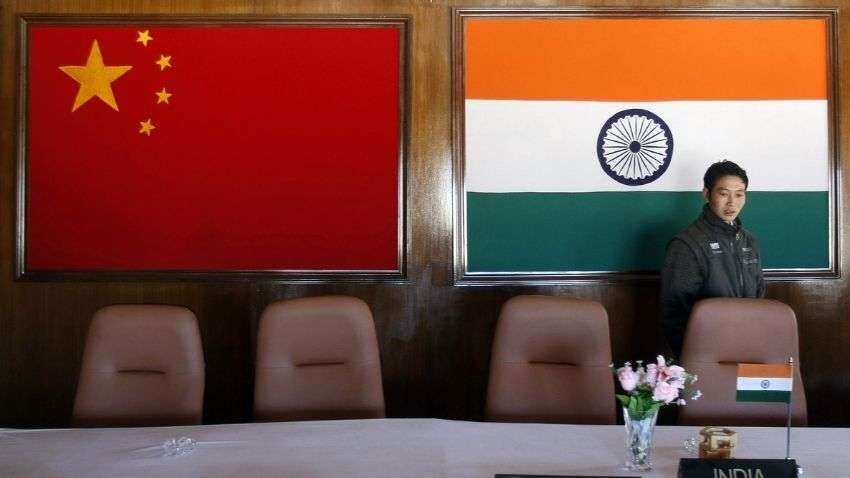India ahead of China in financial inclusion metrics now: Report
In terms of the use of digital payments also, there is noteworthy progress.

India is now ahead of China in financial inclusion metrics, with mobile and internet banking transactions rising to 13,615 per 1,000 adults in 2020 from 183 in 2015 and the number of bank branches inching up to 14.7 per 1 lakh adults in 2020 from 13.6 in 2015, which is higher than Germany, China and South Africa, according to a report.
WATCH | Click on Zee Business Live TV Streaming Below:
States with higher financial inclusion/ more bank accounts have also seen a perceptible decline in crime along with a meaningful drop in consumption of alcohol and tobaccos, according to the report, pencilled by Soumya Kanti Ghosh, group chief economic adviser at State Bank of India (SBI), on the fifth anniversary of the note ban.
Under the non-frills accounts scheme, the number of persons with deposit accounts at banks has significantly increased, becoming comparable with emerging economy peers and even some of the advanced economies.
In terms of the use of digital payments also, there is noteworthy progress.
During the past seven years of the financial inclusion drive, the number of no-frills bank accounts opened has reached 43.7 crore with Rs 1.46 lakh crore in deposits as of October 20, 2021. Of these, nearly two-thirds are operational in rural and semi-urban areas and over 78 per cent of these accounts are with state-owned banks, 18.2 per cent with regional rural banks, and a paltry three per cent are opened by private sector banks.
During this period, the number of bank branches in rural areas has increased from 33,378 in March 2010 to 55,073 in December 2020. The number of banking outlets in villages/ banking correspondents (BCs) has soared from 34,174 in March 2010 to 12.4 lakh in December 2020.
During this period, the number of commercial bank branches per one lakh adults rose from 13.5 to 14.7. The number of deposit accounts with banks rose from 1,536 to 2,031, the number of loan accounts from 154 to 267, and the number of mobile and internet banking transactions rose from 183 to 13,615 (all numbers per 1,000 adults).
Public sector banks have opened 34 crore of the total 44 crore no-frills accounts and the private sector ones just 1.3 crore of them.
Under the non-frills accounts scheme, the number of persons with deposit accounts at banks has significantly increased, becoming comparable with emerging economy peers and even some of the advanced economies. In terms of the use of digital payments also, there is noteworthy progress.
The major credit for the financial inclusion drive should go to the RBI which in January 2016 allowed the business correspondent model of branchless banking.
Calling for fine-tuning the non-branch banking correspondent model by making it uniform across all banks since after the 2017 new branch authorisation policy came into force, there is a need to make the BCs interoperable.
The new norms recognise BCs that provide banking services for a minimum of four hours per day and at least five-day a week, as banking outlets has progressively obviated the need to set up brick-and-mortar branches. The number of banking outlets in villages/BCs has risen from 34,174 in March 2010 to 12.4 lakh in December 2020. And, the success of financial inclusion depends on BCs who are micro-level entrepreneurs.
According to RBI guidelines, while a BC can work for more than one bank, at the point of customer interface, a retail outlet or a sub-agent of a BC shall represent and provide banking services of only one bank.
Get Latest Business News, Stock Market Updates and Videos; Check your tax outgo through Income Tax Calculator and save money through our Personal Finance coverage. Check Business Breaking News Live on Zee Business Twitter and Facebook. Subscribe on YouTube.
RECOMMENDED STORIES

Fundamental picks by brokerage: These 3 largecap, 2 midcap stocks can give up to 28% return - Check targets

SBI Senior Citizen Latest FD Rates: What senior citizens can get on Rs 7 lakh, Rs 14 lakh, and Rs 21 lakh investments in Amrit Vrishti, 1-, 3-, and 5-year fixed deposits

Tamil Nadu Weather Alert: Chennai may receive heavy rains; IMD issues yellow & orange alerts in these districts

SIP+SWP: Rs 10,000 monthly SIP for 20 years, Rs 25 lakh lump sum investment, then Rs 2.15 lakh monthly income for 25 years; see expert calculations

Top 7 Mutual Funds With Highest Returns in 10 Years: Rs 10 lakh investment in No 1 scheme has turned into Rs 79,46,160 in 10 years

SIP vs PPF: How much corpus you can build in 15 years by investing Rs 1.5 lakh per year? Understand through calculations

Retirement Planning: Investment Rs 20 lakh, retirement corpus goal Rs 3.40 crore; know how you can achieve it
06:46 PM IST










 Bhutanese Prime Minister to visit India from November 24-26
Bhutanese Prime Minister to visit India from November 24-26  India, Greece discuss Operationalisation of IMEC corridor; collaboration in shipbuilding
India, Greece discuss Operationalisation of IMEC corridor; collaboration in shipbuilding Canada ends fast track visa programme for international students, Indian students likely to be impacted most
Canada ends fast track visa programme for international students, Indian students likely to be impacted most India's services PMI jumps in October, records strongest hiring in over two years
India's services PMI jumps in October, records strongest hiring in over two years India-China troops begin disengagement at 2 friction points in Ladakh
India-China troops begin disengagement at 2 friction points in Ladakh